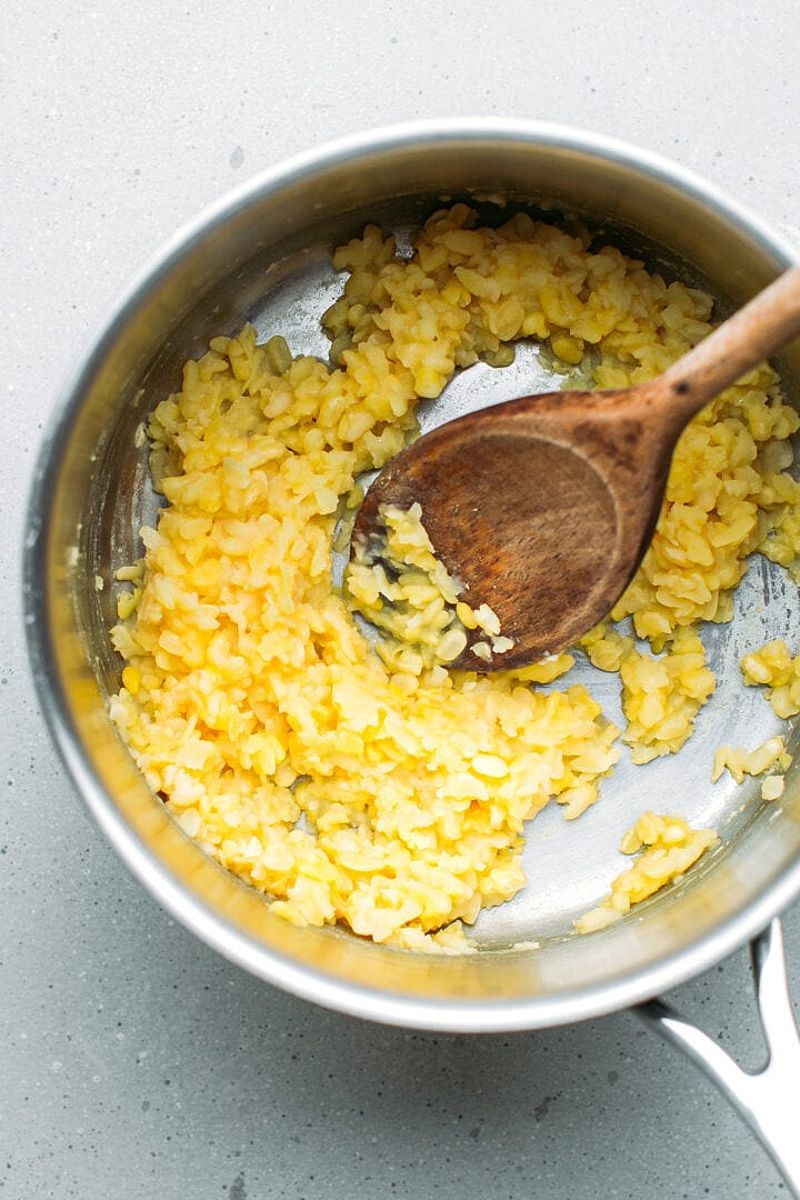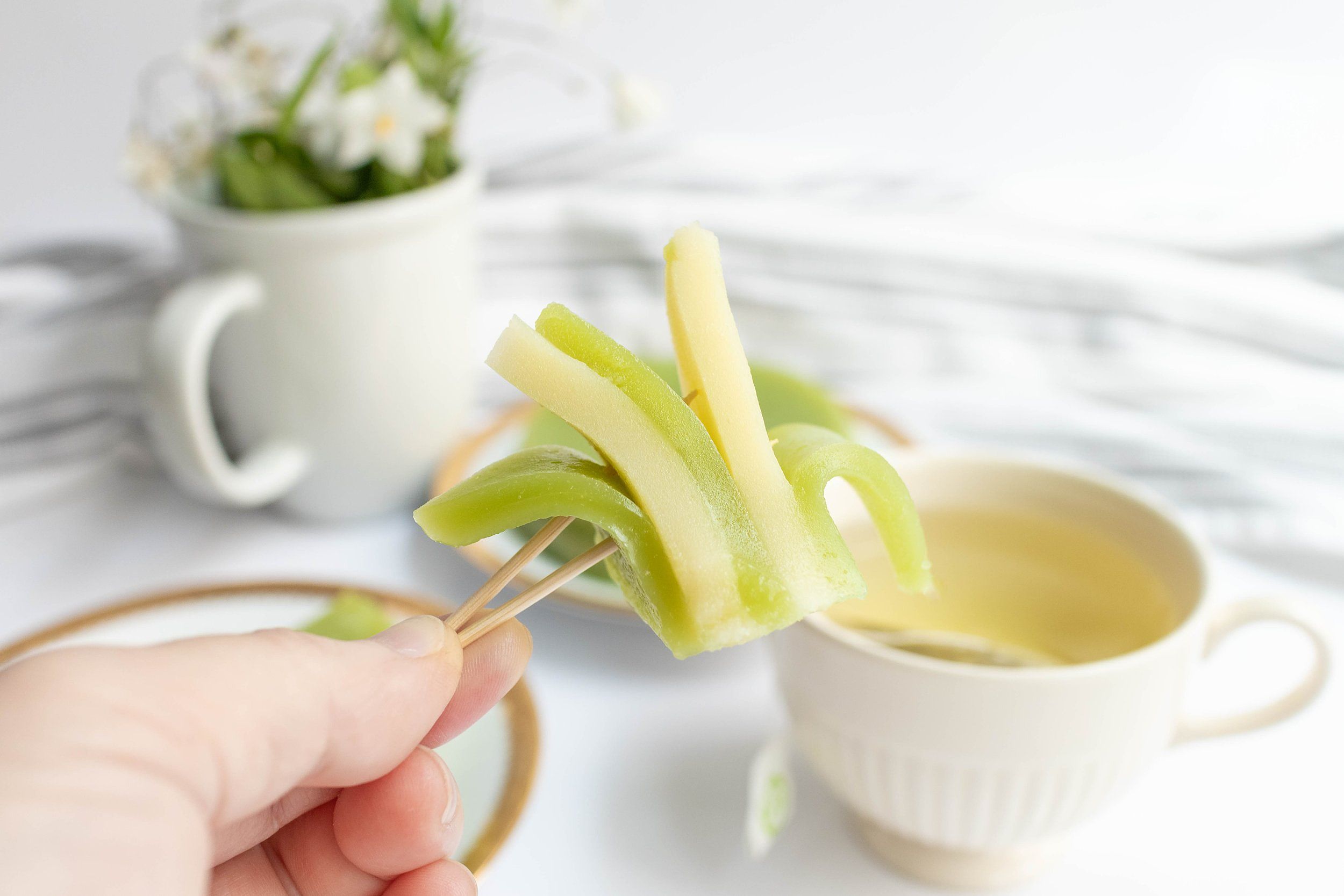As an avid explorer of global culinary traditions, the Vietnamese steamed layer cake, known as Banh Da Lon, has long held a special place in my heart. This vibrant and textural delight is a true testament to the ingenuity and cultural richness of Vietnam, blending mesmerizing hues, fragrant aromas, and a mouthwatering combination of flavors that never fail to captivate my senses.
The name Banh Da Lon, which translates to pig skin cake, may seem a bit puzzling at first, but it perfectly captures the cake’s unique and delightful texture. Imagine sinking your teeth into layers of springy, slightly chewy goodness that melt in your mouth, with each bite revealing a harmonious interplay of pandan-infused green and creamy yellow mung bean. It’s a sensory experience that defies expectations, proving that the best things in life often come in the most unexpected packages.
As I delve deeper into the world of Banh Da Lon, I’m consistently amazed by the care and artistry that goes into its creation. This dessert is not merely a sweet indulgence it’s a testament to the culinary prowess of the Vietnamese people, who have masterfully blended traditional techniques with modern sensibilities to craft a truly remarkable treat.
Unraveling the Secrets of Banh Da Lon
At the heart of this Vietnamese steamed layer cake lies a harmonious interplay of two key ingredients: pandan leaves and mung beans. These humble yet powerful elements come together to form a flavor profile that is both familiar and exotic, captivating the senses and leaving an indelible impression on all who try it.
Pandan: The Vibrant Soul of Banh Da Lon
Pandan leaves, also known as “lá dứa” in Vietnamese, are the unsung heroes of many Southeast Asian desserts, and Banh Da Lon is no exception. These fragrant, grass-like leaves lend their distinctive aroma and vibrant green hue to the cake’s layers, creating a visual and olfactory delight that immediately sets this dessert apart. Whether you’re sourcing the fresh leaves from an Asian grocery store or using a convenience-focused pandan extract, the essence of these leaves is crucial in capturing the authentic flavor of Banh Da Lon.
As I’ve experimented with Banh Da Lon recipes, I’ve found that the pandan leaves play a vital role in elevating the cake’s overall appeal. Their bright green color and captivating aroma instantly draw the eye and invigorate the senses, setting the stage for the indulgent mouthfeel and delicate flavors that follow. The pandan’s grassy, almost coconut-like notes perfectly complement the creamy sweetness of the mung bean layers, creating a harmonious balance that is both familiar and exotic.

Mung Beans: The Creamy Counterpart
Complementing the verdant pandan layers are the golden-hued mung bean layers, which contribute a subtle sweetness and a rich, creamy texture to the cake. The process of cooking and blending the mung beans into a smooth paste is a crucial step, as it helps to create the seamless integration of flavors and textures that defines this dessert. The natural sweetness of the mung beans perfectly balances the fragrant pandan, resulting in a harmonious and indulgent experience with each bite.
As I’ve experimented with different Banh Da Lon recipes, I’ve found that the quality and preparation of the mung beans can have a significant impact on the final outcome. Using high-quality, fresh mung beans and ensuring they are cooked to the perfect level of tenderness is key to achieving the desired creamy consistency and flavor profile. The mung bean paste acts as a delicate counterpoint to the vibrant pandan, creating a layered experience that is both visually stunning and deeply satisfying.

Mastering the Craft of Vietnamese Steamed Layer Cake
Crafting the perfect Banh Da Lon requires a delicate balance of patience, attention to detail, and a deep understanding of the ingredients. As I’ve experimented with this recipe, I’ve learned that the key to success lies in the careful preparation and layering of the batter.
Preparing the Batters
The first step in the Banh Da Lon-making journey is the creation of the two distinct batters that will form the cake’s layers. The yellow mung bean batter and the green pandan batter must be meticulously prepared to ensure a cohesive and visually striking final product.
For the mung bean batter, the process begins with soaking the dried beans to soften them, followed by a thorough cooking and blending process to achieve the desired creamy consistency. This step is crucial, as it ensures that the mung bean layers have a smooth, luxurious texture that complements the chewiness of the overall cake.
The pandan batter, on the other hand, requires the extraction of the vibrant green juice from fresh pandan leaves, which is then combined with coconut milk, sugar, and the dry ingredients to create a smooth, pourable mixture. The fragrance and color of the pandan are the hallmarks of this layer, and getting the balance just right is key to achieving the desired flavor profile.


Steaming the Layers
Once the batters are ready, the true artistry of Banh Da Lon begins to unfold. Using a steamer with a bamboo or metal basket, the layering process commences, with the green pandan batter and the yellow mung bean batter being poured in alternating layers. Each layer is carefully steamed, with the green layers requiring slightly less time than the yellow, to ensure that the cake’s signature texture is achieved.
As I’ve honed my Banh Da Lon-making skills, I’ve learned that the key to success during this stage is maintaining a consistent water level in the steamer and carefully wiping the inside of the lid after each layer to prevent water droplets from falling onto the cake. This attention to detail is what sets the stage for the final, visually stunning result.
Cooling and Serving
After the final layer has been steamed, the cake must be allowed to cool completely before being removed from the pan. This crucial step allows the layers to set and firm up, ensuring that the cake can be sliced cleanly and beautifully.
When ready to serve, I like to use a sharp knife with a plastic wrap-covered blade to gently cut the cake into individual rectangles. This technique helps to prevent the layers from sticking to the knife, allowing the vibrant colors and delicate textures to be showcased in all their glory.
Banh Da Lon is best enjoyed at room temperature, where its chewy, springy texture and delicate flavors can be fully appreciated. Whether served as a standalone dessert or accompanied by a fragrant cup of Vietnamese coffee or tea, this captivating cake is sure to delight the senses and leave a lasting impression on all who indulge in it.

Exploring Variations and Putting Your Own Spin on Banh Da Lon
While the traditional Banh Da Lon is a true masterpiece in its own right, the beauty of this dessert lies in its versatility. As a home cook, I find great joy in experimenting with different variations and putting my own personal spin on this Vietnamese delicacy.
One of the most exciting avenues for exploration is the incorporation of other ingredients, such as durian or taro, to create additional layers and flavor profiles. By playing with different combinations, you can unlock a world of new sensations and delight your family and friends with your culinary creativity.
Additionally, you can experiment with the intensity of the pandan flavor by adjusting the amount of fresh leaves or pandan extract used in the batter. For those who prefer a more pronounced pandan aroma, a few extra drops of the extract can do the trick, while those who desire a more subtle essence can opt for a lighter touch.
No matter which path you choose, the beauty of Banh Da Lon lies in the journey of discovery. As you delve into the art of crafting this captivating Vietnamese dessert, you’ll not only develop a deeper appreciation for the rich culinary traditions of the region but also have the opportunity to create something truly unique and personal.
FAQ
Q: Can I substitute the tapioca starch in the recipe?
A: Tapioca starch is an essential ingredient in Banh Da Lon, as it contributes to the cake’s signature chewy and stretchy texture. While other starches can be used, the results may not be as authentic or satisfying.
Q: How long does Banh Da Lon keep?
A: Properly stored at room temperature, Banh Da Lon can remain fresh for 2-3 days. Avoid refrigerating the cake, as it can cause the texture to dry out and become harder.
Q: Is this cake vegan?
A: Yes, this recipe for Banh Da Lon is entirely vegan, as it uses only plant-based ingredients. It’s a delightful treat that can be enjoyed by all, regardless of dietary preferences.
Embracing the Vibrant World of Banh Da Lon
As I reflect on my journey with the Vietnamese steamed layer cake, I’m filled with a sense of appreciation and excitement. Banh Da Lon is more than just a dessert; it’s a gateway to the rich culinary heritage of Vietnam, a testament to the ingenuity and creativity of the Vietnamese people.
By embracing the art of crafting this captivating treat, we not only indulge our taste buds but also cultivate a deeper understanding and respect for the diverse flavors and traditions that make up the vibrant tapestry of global cuisine. So, whether you’re a seasoned home cook or a curious food enthusiast, I encourage you to embark on your own Banh Da Lon adventure, and let the vibrant layers and delightful textures transport you to the heart of Vietnamese culinary culture.
As I continue to explore and experiment with Banh Da Lon, I’m constantly amazed by the depth of flavor and the complexity of texture that can be achieved with this seemingly simple dessert. Each time I prepare it, I’m reminded of the rich history and cultural significance that it holds, and I’m inspired to share this captivating treat with family and friends.
In a world where culinary trends come and go, Banh Da Lon remains a timeless classic, a true testament to the enduring power of traditional techniques and the ability of innovative minds to breathe new life into beloved recipes. By embracing the art of Banh Da Lon, we not only honor the past but also pave the way for a future where the flavors and traditions of Vietnam continue to captivate and inspire food lovers around the world.
So, let’s embark on this delightful journey together, and uncover the secrets of the Vietnamese steamed layer cake. With each bite, may we be transported to the vibrant streets of Vietnam, where the aroma of pandan and the richness of mung bean come together in a harmonious dance, leaving us with a newfound appreciation for the power of food to connect us to the world around us.


